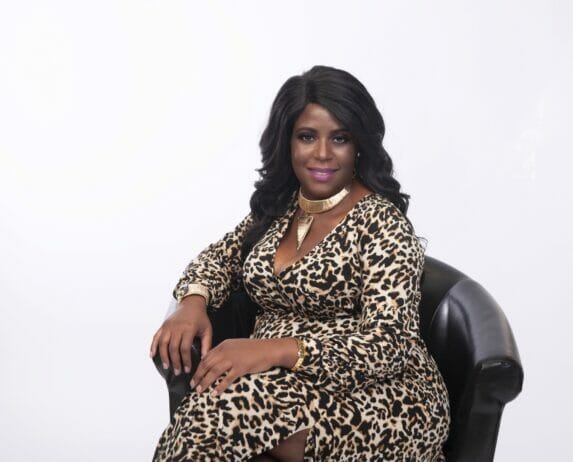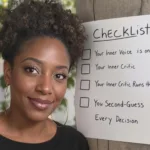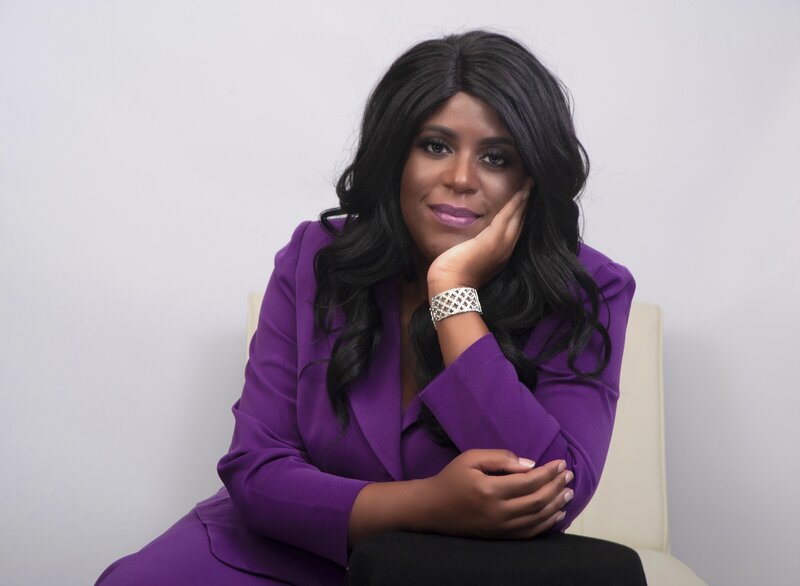November 17, 2023
We all know the whispers of self-doubt when we hear them. Imagine standing at the edge of a diving board, the water below representing the vast ocean of your potential. You’ve taken swim lessons from the best instructors. Yet, as you prepare to leap, a voice whispers, “What if you can’t swim?” This is the voice of self-doubt, an invisible chain that binds many of us, preventing us from diving into the depths of our capabilities.
Self-doubt myths often act as invisible shackles, binding us to a plateau far below what we are capable of achieving. Self-doubt is a phenomenon that transcends age, gender, and professional status. It’s a psychological barrier that, if left unaddressed, can really impede our growth and happiness. However, contrary to popular belief, self-doubt is not an indicator of inadequacy or weakness. Instead, it’s a natural response to the challenges and uncertainties we face in our journey towards achieving our goals.
My aim today is to dismantle the myths surrounding self-doubt. And shed light on how these misconceptions can distort our perception of ourselves and our abilities. Only by understanding and confronting these myths, can we begin to unlock the door to our true potential. Stepping beyond the boundaries of our mentally self-imposed limits. Join us as we debunk five common self-doubt myths and explore strategies to overcome them, paving the way for a journey of self-discovery and empowerment.
Myth 1: Self-Doubt is a Sign of Weakness
The first myth in our exploration of self-doubt is the widespread belief that experiencing self-doubt is a sign of weakness. This misconception paints self-doubt as something to be ashamed of, a personal flaw that must be hidden, especially in workplace settings. However, the reality is far more nuanced and human than that.
Take the example of Erika, a high-achieving executive known for her sharp decision-making and leadership skills. To her colleagues, Erika epitomizes confidence and competence. Yet, in moments of quiet reflection, Emily often battles with self-doubt. She questions her decisions and worries about the outcomes. This self-doubt, contrary to being a weakness, is actually a sign of Erika’s deep commitment to her role and her desire to perform at her best. It drives her to constantly evaluate and improve her strategies, keeping her on the path of growth and innovation.
Self-doubt, when understood and managed effectively, can be a powerful tool for learning and development. It encourages introspection and a quest for improvement. The key to transforming self-doubt from a perceived weakness into a strength lies in how we respond to it. Acknowledge it. Accept self-doubt as a natural part of the human experience. It’s important to recognize that everyone, even the most successful individuals, experiences moments of doubt. This realization can be liberating and can help diminish the shame sometimes associated with self-doubt.


Furthermore, it’s crucial to develop strategies to manage self-doubt constructively. This can involve seeking feedback (from folks you trust. Also helpful is focusing on past successes, setting realistic goals, and engaging in positive self-talk. For Erika, it meant creating a support network of trusted colleagues with whom she could discuss her doubts and gain different perspectives.
In conclusion, the belief that self-doubt is a sign of weakness is a myth that needs to be dispelled. Self-doubt is a natural and common experience that, when managed effectively, can be a valuable tool for learning, growth, and improvement. By embracing our doubts and using them as a springboard for development, we can continue to evolve both personally and professionally. Remember, it’s not the absence of self-doubt that defines strength, but how we choose to respond to it.
Myth 2: Everyone Else Knows What They’re Doing, But I Don’t
One of the most pervasive self-doubt myths is the belief that everyone else is confidently navigating their professional and personal lives. While you’re the only one feeling lost or uncertain. We often assume that confidence and competence are universal among our peers, leaving us as the sole outlier struggling behind to keep up.
Consider Sharon, a mid-level manager in a bustling corporate firm. From the outside, Sharon appears to have it all together – leading meetings with poise, managing her team effectively, and consistently meeting her targets. However, behind this facade of confidence, Sharon often finds herself grappling with the nagging thought: “Am I really good enough? Everyone else seems so sure of themselves. I feel like a fraud.”
This phenomenon, imposter syndrome, is not unique to Sharon. It’s a common experience among high achievers and professionals. The truth is, everyone has moments of doubt and uncertainty. The difference lies in how individuals perceive and react to these feelings.
The key to overcoming this myth lies in understanding that self-doubt is a natural part of the human experience. It’s not a sign of incompetence or inadequacy but a reflection of our desire to do well and our awareness of the complexities of our roles.
Embracing this understanding can be liberating. It allows us to accept that it’s okay not to have all the answers. And to view each challenge as an opportunity to learn and grow. This mindset shift can transform our approach to work and life, fostering a culture of continuous learning and self-improvement.
Moreover, it’s essential to practice self-compassion and recognize that perfection is an unattainable goal. By accepting our imperfections and limitations, we can create a more authentic and fulfilling professional journey. This acceptance doesn’t mean settling for mediocrity but acknowledging that growth and competence are ongoing processes.
Myth 3: I’m Not Good Enough, So I Shouldn’t Even Try Self-doubt
The third myth in our exploration of self-doubt is the crippling belief that you are inherently not good enough to pursue your goals or dreams. This myth manifests as a voice inside your head, constantly whispering, “Why bother trying when you’re bound to fail?” It’s a self-imposed barrier that can stop progress before it even begins!
Let’s consider Angela, a talented graphic designer with a passion for illustration. Angela has always dreamed of launching her own line of illustrated children’s books. However, every time she contemplates taking the first step, a voice in her head tells her, “You’re not a real artist. Your work isn’t good enough to be published.” This negative self-talk stems from comparing her work to that of established artists, leading her to believe that her skills are not good enough.
This myth thrives on the false premise that success is reserved for those with innate, exceptional abilities. It ignores the reality that most achievements are the result of smart work, perseverance, and a willingness to learn from failures.
The key to overcoming this myth is to shift the focus from a fixed mindset, which views abilities as static and unchangeable, to a growth mindset. A growth mindset embraces the idea that abilities can be developed through dedication and hard work. It’s about valuing the process over the end result and understanding that effort is a path to mastery. In other words, celebrate your progress and who you became during the process.
It’s also crucial to engage in positive self-talk and affirmations. Instead of telling herself, “I’m not good enough,” Angela could reframe her thoughts to, “I am constantly improving and learning.” This shift in perspective can open the door to new possibilities and opportunities.
The belief that we’re not good enough to even try is a destructive myth that can prevent us from reaching our full potential. By adopting a growth mindset, engaging in positive self-talk, and viewing challenges as opportunities for growth, we can overcome this barrier. Remember, success is not about being the best from the start. Rather it’s about being better than you were yesterday and continuing to improve.
Myth 4: I’m Afraid of Failure, So I’ll Avoid Taking Risks
The fourth myth in our journey through the landscape of self-doubt is the fear of failure. Which often leads to the avoidance of risks. Procrastination anybody! This myth is rooted in the belief that failure is a negative outcome to be feared, rather than an integral part of growth and learning. And if you don’t do the work to blast this myth, it may lead to catastrophic thinking. Which can ultimately undermine your career and your happiness.
Consider Lisa, a project manager with innovative ideas that could potentially revolutionize her company’s workflow. However, Lisa is haunted by a past project that didn’t go as planned, leading to criticism from her peers. This experience has instilled in her a deep fear of failure, causing her to play it safe, avoid risks, and pass on proposing her new ideas. This despite believing in their potential.
This myth perpetuates the idea that to fail is to expose oneself to judgment and ridicule. Overshadowing the fact that most successful people actually have a history of failures behind them. The fear of failure can be paralyzing. It’s important to reframe how you view failure. Instead of seeing it as a negative endpoint, viewed it as a stepping stone to success. Failure is not the opposite of success. It’s part of the journey towards success. Embrace this mindset so you can transform your approach to challenges and opportunities.
Another effective strategy is to practice calculated risk-taking. This involves evaluating the potential risks and benefits of a decision and understanding that not all risks lead to catastrophic outcomes. By taking calculated risks, we can step out of our comfort zones in a controlled and thoughtful manner. Remember success lies beyond your comfort zone, not in it.
Moreover, it’s crucial to cultivate a supportive environment where failure is not stigmatized but seen as a part of the learning process. In an environment like this, Lisa might feel more encouraged to share her innovative ideas. Understanding that even if they don’t work out as planned, the experience will still provide valuable insights.
In conclusion, the myth that we should avoid risks due to fear of failure is a significant barrier to personal and professional growth. By reframing our perspective on failure, practicing calculated risk-taking, and fostering a supportive environment, we can overcome this fear and embrace the opportunities that come with stepping into the unknown. Remember, every great achievement involves some degree of risk, and it’s through taking these risks that we truly grow and learn.
Myth 5: I’m Not Qualified or Capable of Achieving My Dreams
The fifth and final myth in our exploration of self-doubt is the belief that one is not qualified or capable enough to achieve their dreams. This myth is rooted in the comparison trap, where individuals measure their worth and abilities against others, often leading to feelings of inadequacy and hopelessness.
Let’s Jordan, a middle manager in a dynamic tech company. Jordan’s experience with self-doubt is a powerful example of the challenges faced by many in similar positions. Despite being recognized for her leadership skills and innovative ideas, Jordan often found herself questioning her decisions and capabilities. Especially when comparing herself to senior executives. This self-doubt, while a common experience, didn’t have to define her professional journey.
This myth thrives on the misconception that success is reserved for those with exceptional, innate talents or qualifications. It ignores the countless stories of individuals who achieved remarkable things through persistence, learning, and sheer determination.
The key to overcoming this myth is to focus on one’s unique journey and strengths. Instead of comparing herself to established senior executives, Jordan could benefit from embracing her unique perspective and voice, understanding that every manager different. It’s about recognizing that qualifications and capabilities are not fixed but can be developed and expanded over time.
Another effective strategy is to set realistic, incremental goals. For Thomas, this meant starting with small coding projects and gradually building up to more complex ones. This approach allows for continuous learning and growth, making seemingly unattainable dreams more achievable.
Moreover, it’s crucial to cultivate a supportive network that encourages and believes in your potential. Having mentors, friends, or colleagues who provide encouragement and constructive feedback can be incredibly empowering.
In conclusion, the belief that one is not qualified or capable of achieving their dreams is a myth that can limit our potential and hinder our pursuit of fulfillment. By focusing on our unique strengths, setting realistic goals, and surrounding ourselves with supportive people, we can overcome this barrier. Remember, qualifications and capabilities are not just about formal education or innate talent; they are also about passion, persistence, and the willingness to learn and grow.
Comparing ourselves to others can lead to feelings of inadequacy and doubt. However, each person’s journey is unique, and what matters most is not how we stack up against others but how we leverage our own strengths and talents. By focusing on our individual abilities and passions, we can chart a path toward our dreams that is both authentic and fulfilling.
Breaking Free from Self-Doubt: Practical Strategies
- Practice Mindfulness: Being aware of your thoughts and emotions allows you to identify and challenge negative self-talk.
- Build a Supportive Network: Surround yourself with people who uplift and inspire you.
- Celebrate Small Wins: Acknowledging your achievements reinforces self-belief.
- Seek Mentorship: Guidance from experienced individuals can provide valuable insights and encouragement.
- Embrace a Growth Mindset: View challenges as opportunities for personal development.
Final Thoughts
As we wrap up our exploration of these five self-doubt myths, it’s essential to take a moment to reflect on the profound journey we’ve embarked upon. Each myth, unique in its own right, reveals a deeper truth about the nature of self-doubt and its impact on our lives. From Erika’s discovery of self-doubt as a tool for growth, to Sharon’s realization about the universality of Imposter Syndrome, Angela’s embrace of a growth mindset, Lisa’s reframing of failure, and Jordan’s recognition of the power of perseverance. These stories collectively underscore a vital lesson: self-doubt, while a common experience, need not be a permanent obstacle.
The narratives we’ve shared illuminate the transformative power of confronting and redefining our understanding of self-doubt. It’s not an adversary to be feared but a natural aspect of our journey towards self-improvement and success. The strategies to overcome self-doubt – mindfulness, building supportive networks, celebrating small victories, seeking mentorship, and fostering a growth mindset – are tools that can help us navigate this journey with greater confidence and resilience.
As you move forward, remember that the journey to overcoming self-doubt is deeply personal and unique to each individual. It’s about recognizing and embracing your own experiences, strengths, and areas for growth. The path is not always straightforward, but it is enriched with opportunities for learning and self-discovery.
In closing, let’s not view self-doubt as a barrier but as a stepping stone towards greater achievements. Embrace the lessons learned, apply the strategies discussed, and always strive to unlock your true potential. Remember, the journey to overcoming self-doubt is ongoing. And every step forward is a step towards realizing your dreams and aspirations. Need help implementing these strategies? Take the. next step and chedule a V.I.P. Roadmap session with me today.


Twanna Carter, PhD, ICF/PCC, Career Coach for Black Women Leaders | 20+ Years of Experience Helping Women Achieve Their Career Goals | Leadership | Personal Development | Business Strategy | Career Development | Lifestyle Balance | Digital Business Card | V.I.P. Roadmap Session
Curated Reads: Essential Books to Add to Your Personal Library
- Quiet: The Power of Introverts in a World That Can’t Stop Talking by Susan Cain.
- Unleash your career potential with our free library of resources. Access our free Career Resource Library today and start your journey to a more fulfilling career.
- Taming Your Gremlin: A Surprisingly Simple Method for Getting Out of Your Own Way by Rick Carson
- The Confidence Code: The Science and Art of Self-Assurance—What Women Should Know by Katty Kay & Claire Shipman
- Stop & Shift: The Mindset Reset that Changes Everything by Karen Allen
- Unapologetically Ambitious: Take Risks, Break Barriers, and Create Success on Your Own Terms by Shellye Archambeau
- Melaninated Magic: 180 Affirmations to Nurture Your Soul and Unleash Your Black Girl Joy by Twanna Carter, PhD
- I’m Not Yelling: A Black Woman’s Guide to Navigating the Workplace (Successful Black Business Women), Elizabeth Leiba.
- Crucial Conversations: Tools for Talking When Stakes Are High by Kerry Patterson, Joseph Grenny, Ron McMillan, and Al Switzler.
- Dare to Lead by Brene Brown.
- The Memo, by Minda Harts.
- Atomic Habits: An Easy & Proven Way to Build Good Habits & Break Bad Ones, by James Clear
- Worthy: How to Believe You Are Enough and Transform Your Life, by Jamie Kern Lima
Also Read…
- Why Executive Coaching Works for Black Women ExecutivesHow the Thrive Beyond Survival V.I.P. Framework™ Creates the Shift from Stuck to Thriving “You’ve checked every box. Degrees. Promotions. Leadership roles. Yet… you… Read more: Why Executive Coaching Works for Black Women Executives
- 3 Mistakes Executives Make During a Career PivotLet’s Get Real: Why This Matters Making a career pivot as an executive isn’t just about updating your job title or adding a shiny… Read more: 3 Mistakes Executives Make During a Career Pivot
- 7 Signs You’re Still Leading From Survival ModeIf you’re a high-achieving Black woman executive, you’ve probably mastered the art of the juggle, leading teams, making tough calls, and holding it… Read more: 7 Signs You’re Still Leading From Survival Mode
- What If Your Career Wasn’t Meant to Be This Hard?7 Thought-Shifting Prompts to Help You Discover the Work You’re Meant For You know that quiet ache that shows up on Sunday nights? The… Read more: What If Your Career Wasn’t Meant to Be This Hard?
- Why Boundaries Are the Richest Thing You Can Build This YearWealth Isn’t Just About Your Bank Account When you hear the word “rich,” what pops into your mind? Diamond necklaces? Stock portfolios? That one… Read more: Why Boundaries Are the Richest Thing You Can Build This Year
- Are You Really Being Too Much, Or Just Being Seen?Have you ever felt the need to shrink yourself at work or in social spaces, just to avoid being labeled as “being too much”?… Read more: Are You Really Being Too Much, Or Just Being Seen?
- Career Shift? These 9 Transferable Skills Resources Are Game-ChangersAs an executive-level professional aiming for a strategic career pivot, knowing your transferable skills isn’t just beneficial, it’s essential. Transferable skills are abilities you… Read more: Career Shift? These 9 Transferable Skills Resources Are Game-Changers
- You Need a Hustle Detox. Not Another Planner.Are you tired of buying yet another planner, hoping THIS one will finally fix your chaos? You know the drill: glossy cover, color-coded tabs,… Read more: You Need a Hustle Detox. Not Another Planner.
- The 5 Core Values Every Black Woman Executive Should Define Before Her Next Career MoveHave you ever felt overwhelmed by opportunities, yet unsure which path truly fits your ambitions, identity, and well-being? If you’re a Black woman executive… Read more: The 5 Core Values Every Black Woman Executive Should Define Before Her Next Career Move
- How to Protect Yourself from Being Managed Out – The Ultimate Survival Playbook for Black Women ExecutivesYou walk into the Monday morning meeting, coffee in hand, feeling ready to tackle the week. But something’s off. The room feels colder.… Read more: How to Protect Yourself from Being Managed Out – The Ultimate Survival Playbook for Black Women Executives
- What Your Inner Critic Is Really Costing You. And How to Take Back ControlHave you ever replayed a single mistake in your mind for days, doubted your abilities before a big meeting, or hesitated to ask for… Read more: What Your Inner Critic Is Really Costing You. And How to Take Back Control
- Why Black Women Execs Doubt Their Voice (and How to Reclaim Your Power)And it starts now. If you’re ready to reclaim your voice, you don’t have to do it alone. Schedule your V.I.P. Roadmap Session today.… Read more: Why Black Women Execs Doubt Their Voice (and How to Reclaim Your Power)






















+ show Comments
- Hide Comments
add a comment